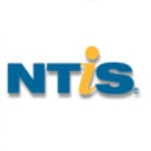The National Technical Information Service (NTIS), a division of the U.S. Department of Commerce’s Technology Administration, serves as a public clearinghouse for scientific and business information primarily acquired through government-funded research. According to the agency’s Web site, the NTIS maintains some 3 million publications in more than 350 subject areas, with many documents created after 1997 available for download. It currently receives no appropriations from the federal government, covering expenses by charging fees for most products and services.
The precursor to the National Technical Information Service (NTIS) was the Office of the Publication Board, an agency created by President Harry S. Truman during World War II to collect, review and transmit to the public formerly classified technical information. In 1950, Congress passed the Technological, Scientific and Engineering Information Act, instructing the commerce secretary to establish a repository for technical information “from whatever sources, foreign and domestic, that may be available,” and to make “the results of technological research and development readily available to industry and business, and to the general public.” The Office of the Publication Board became the Office of Technical Services, which in turn became the Clearinghouse for Federal Scientific and Technical Information. Finally, an act of Congress established the NTIS on September 2, 1970.
Over the past two decades, there have been occasional grumblings about the NTIS’ future. Some have asserted that there isn’t sufficient oversight on the agency, while others say the NTIS faces insurmountable competition from private-sector information sources, the Internet and even other government agencies. Still others say the way the NTIS functions is inefficient and unfocused—an apparent reflection of the organizational legacy of its incarnations prior to 1970.
For more information, see:
U.S. Code, Title 15, Chapter 63, § 3704b: National Technical Information Service (Cornell University Law School)
The National Technical Information Service (NTIS) sells a wide variety of publications. Some examples include:
Armed Forces Recipe Service ($79)
Comparison of Dietary Patterns for Kenya and Burkina Faso (1987: $33 or $48, depending on medium)
Oral LD50 Testing in Fasted and Non-Fasted Rats (1981: $33 or $48, depending on medium)
The Effects of Home Video Games on Television Receivers (1977: $27 or $33 depending on medium)
Factors Affecting the Quality of Freeze-Dried Green Beans (1969: $27)
Ground Dog Day: Lessons Don’t Have to Be Relearned in the Use of Dogs in Combat (2005: $25, $40 or $60, depending on medium)
Parliamentary and Municipal Elections in Montenegro (1998: $15, $27, $30 or $33, depending on medium)
In addition to serving as a public clearinghouse for information, the NTIS forms partnerships with federal agencies to help process and store technical data. It also operates the National Audiovisual Center, a repository for training and educational materials developed by the federal government.
The NTIS Advisory Board, comprising five members appointed by the secretary of commerce, reviews agency policy. The current chairman is Dr. John Regazzi, who was formerly dean of Long Island University’s College of Information and Computer Science, and CEO of Elsevier, Inc., a science and health information publisher.
For more information, see:
From the Web Site of the National Technical Information Service
CMS Medicare Grouper and Editor
Database – Drug Enforcement Agency: CSA
Database – Toxic Substance Tests
Databases – Government Related
E-Training Systems and Partnerships
Electronic Archive Support and Other Services
Federal Computer Products Center
Federal Energy Data Management
Stakeholders include any business or individual involved in any scientific or technical industry, such as software, biotechnology, engineering, health care, energy production, etc. Government agencies that rely upon the National Technical Information Service (NTIS) to process technical data are also stakeholders, as are academics, librarians and information-science associations. The National Federation of Federal Employees represents NTIS employees.
The NTIS has spent more than $4.6 million on 27 contractor transactions between 2002 and 2012, according to USASpending.gov. The top five types of services used were public relations ($2,741,500), technical assistance ($468,364), IT and telecommunications ($462,433), housekeeping/janitorial ($416,482), and other IT and telecommunications products ($246,611).
The following are the top four recipients of NTIS contractor spending during that 10-year period, along with the amounts they were paid and respective percentage of total NTIS contractor services spending:
1. August Lang & Husak $2,741,500 (59%)
2. Alcosys Incorporated $930,797 (20%)
3. Vador Ventures $416,482 (9%)
4. Paradigm Holdings, Inc. $246,611 (5%)
Many people expect government information to be free. The Internet has reinforced this expectation, as more and more government entities post press releases, statistics, and publications online, where they can be accessed without charge. Those opposed to fees also point out that taxpayers have already paid for information produced by the government.
It was therefore controversial in 1999 when the National Technical Information Service (NTIS) announced a partnership with search-engine company Northern Light, which would allow paid subscribers to comb through their combined government databases. That the Clinton administration had pledged to make government information more accessible to the public only intensified the controversy. The search engine, dubbed usgovsearch.com, ended up launching as a private venture after the NTIS announced a change in its relationship with Northern Light. Instead of sharing the subscription revenue, the NTIS charged Northern Light to link its databases to usgovsearch.com. The NTIS also received the proceeds from any of its documents that were sold. In 2001, that arrangement was terminated, as well.
Government Pulls Out of Search Venture (by Jeri Clausing, New York Times)
NTIS drops from participation in disputed site (by Frank Tiboni, GCN)
Northern Light’s usgovsearch Begins Commercial Operation with Revised Pricing Plan (by Paula J. Hane, Information Today)
USGOVSEARCH: The Federal Web, NTIS Database and More (Greg R. Notess, personal Web site)
The Secretary of Commerce suggested in 1999 that the National Technical Information Service (NTIS) be closed and its archives merged with the Library of Congress, citing the agency’s declining revenues. This prompted the U.S. National Commission on Libraries and Information Science (NCLIS) to launch a study, which found that the NTIS should be maintained pending further investigation. The General Accountability Office also published two reports; the first (pdf) painted a downcast picture of the mission and financial future of the NTIS, and the second (pdf), published after the information service cut costs, argued for further study.
Others, such as President Ronald Reagan, have proposed privatizing the NTIS or transferring its functions to the Government Printing Office.
For more information, see:
U.S. National Commission on Libraries and Information Science: NTIS, a review conducted in 2000
- Table of Contents
- Overview
- History
- What it Does
- Where Does the Money Go
- Controversies
- Suggested Reforms
- Comments
- Leave a comment


Avi Bender, who has directed technical innovation projects in government and private industry, was named in June 2016 to be director of the National Technical Information Service (NTIS).
Bender is from Brooklyn, New York. His father, Benjamin, was a Holocaust survivor originally from Poland who wrote about his experiences in a book, “Glimpses—Through Holocaust and Liberation.”
The younger Bender graduated from James Madison High School in Brooklyn and went on to Brooklyn College, where he earned a B.Sc. in biology in 1973. He then went to C.W. Post College at Long Island University, where he earned a master’s degree in marine science in 1975. Bender later went to the University of Maryland, earning a master’s in business administration and technology in 1989.
By 1986, Bender was director of technology for the U.S. Nuclear Regulatory Commission. He left the government in 1990 to become vice president of business development for GTE (now Verizon). In 1994, Bender was named managing director for entertainment, media and communications for Price Waterhouse. He remained in that field in 1997 when he became managing principal for media and entertainment for IBM’s management consulting business. In 2000, Bender struck out on his own as a consultant for enterprise content management and was an investor in a software startup.
Bender returned to federal services in 2006 as director of enterprise architecture for the Internal Revenue Service. In 2010, he moved over to the U.S. Census Bureau as chief technology officer. There, he tried to recreate a Silicon Valley atmosphere for his developers in the hope of bringing more innovative ideas to the agency. He remained there until moving to the NTIS.
Bender and his wife, Lili, have two children. He is an accomplished amateur photographer.
-Steve Straehley
To Learn More:

- Latest News
- D.C. Public Schools will Teach all Second-Graders to Ride a Bike
- New Rule in Germany Limits Sales of Sex-Themed E-Books to 10pm to 6am
- What Happened to the 6-Year-Old Tibetan Boy the Chinese Government Kidnapped 20 Years Ago?
- U.S. Ambassador to Turkey Photoshops his Hair Color to Mock Turkish Mayor
- Mystery Artist Calls Attention to Unfixed Potholes by Drawing Penises around Them
The National Technical Information Service (NTIS), a division of the U.S. Department of Commerce’s Technology Administration, serves as a public clearinghouse for scientific and business information primarily acquired through government-funded research. According to the agency’s Web site, the NTIS maintains some 3 million publications in more than 350 subject areas, with many documents created after 1997 available for download. It currently receives no appropriations from the federal government, covering expenses by charging fees for most products and services.
The precursor to the National Technical Information Service (NTIS) was the Office of the Publication Board, an agency created by President Harry S. Truman during World War II to collect, review and transmit to the public formerly classified technical information. In 1950, Congress passed the Technological, Scientific and Engineering Information Act, instructing the commerce secretary to establish a repository for technical information “from whatever sources, foreign and domestic, that may be available,” and to make “the results of technological research and development readily available to industry and business, and to the general public.” The Office of the Publication Board became the Office of Technical Services, which in turn became the Clearinghouse for Federal Scientific and Technical Information. Finally, an act of Congress established the NTIS on September 2, 1970.
Over the past two decades, there have been occasional grumblings about the NTIS’ future. Some have asserted that there isn’t sufficient oversight on the agency, while others say the NTIS faces insurmountable competition from private-sector information sources, the Internet and even other government agencies. Still others say the way the NTIS functions is inefficient and unfocused—an apparent reflection of the organizational legacy of its incarnations prior to 1970.
For more information, see:
U.S. Code, Title 15, Chapter 63, § 3704b: National Technical Information Service (Cornell University Law School)
The National Technical Information Service (NTIS) sells a wide variety of publications. Some examples include:
Armed Forces Recipe Service ($79)
Comparison of Dietary Patterns for Kenya and Burkina Faso (1987: $33 or $48, depending on medium)
Oral LD50 Testing in Fasted and Non-Fasted Rats (1981: $33 or $48, depending on medium)
The Effects of Home Video Games on Television Receivers (1977: $27 or $33 depending on medium)
Factors Affecting the Quality of Freeze-Dried Green Beans (1969: $27)
Ground Dog Day: Lessons Don’t Have to Be Relearned in the Use of Dogs in Combat (2005: $25, $40 or $60, depending on medium)
Parliamentary and Municipal Elections in Montenegro (1998: $15, $27, $30 or $33, depending on medium)
In addition to serving as a public clearinghouse for information, the NTIS forms partnerships with federal agencies to help process and store technical data. It also operates the National Audiovisual Center, a repository for training and educational materials developed by the federal government.
The NTIS Advisory Board, comprising five members appointed by the secretary of commerce, reviews agency policy. The current chairman is Dr. John Regazzi, who was formerly dean of Long Island University’s College of Information and Computer Science, and CEO of Elsevier, Inc., a science and health information publisher.
For more information, see:
From the Web Site of the National Technical Information Service
CMS Medicare Grouper and Editor
Database – Drug Enforcement Agency: CSA
Database – Toxic Substance Tests
Databases – Government Related
E-Training Systems and Partnerships
Electronic Archive Support and Other Services
Federal Computer Products Center
Federal Energy Data Management
Stakeholders include any business or individual involved in any scientific or technical industry, such as software, biotechnology, engineering, health care, energy production, etc. Government agencies that rely upon the National Technical Information Service (NTIS) to process technical data are also stakeholders, as are academics, librarians and information-science associations. The National Federation of Federal Employees represents NTIS employees.
The NTIS has spent more than $4.6 million on 27 contractor transactions between 2002 and 2012, according to USASpending.gov. The top five types of services used were public relations ($2,741,500), technical assistance ($468,364), IT and telecommunications ($462,433), housekeeping/janitorial ($416,482), and other IT and telecommunications products ($246,611).
The following are the top four recipients of NTIS contractor spending during that 10-year period, along with the amounts they were paid and respective percentage of total NTIS contractor services spending:
1. August Lang & Husak $2,741,500 (59%)
2. Alcosys Incorporated $930,797 (20%)
3. Vador Ventures $416,482 (9%)
4. Paradigm Holdings, Inc. $246,611 (5%)
Many people expect government information to be free. The Internet has reinforced this expectation, as more and more government entities post press releases, statistics, and publications online, where they can be accessed without charge. Those opposed to fees also point out that taxpayers have already paid for information produced by the government.
It was therefore controversial in 1999 when the National Technical Information Service (NTIS) announced a partnership with search-engine company Northern Light, which would allow paid subscribers to comb through their combined government databases. That the Clinton administration had pledged to make government information more accessible to the public only intensified the controversy. The search engine, dubbed usgovsearch.com, ended up launching as a private venture after the NTIS announced a change in its relationship with Northern Light. Instead of sharing the subscription revenue, the NTIS charged Northern Light to link its databases to usgovsearch.com. The NTIS also received the proceeds from any of its documents that were sold. In 2001, that arrangement was terminated, as well.
Government Pulls Out of Search Venture (by Jeri Clausing, New York Times)
NTIS drops from participation in disputed site (by Frank Tiboni, GCN)
Northern Light’s usgovsearch Begins Commercial Operation with Revised Pricing Plan (by Paula J. Hane, Information Today)
USGOVSEARCH: The Federal Web, NTIS Database and More (Greg R. Notess, personal Web site)
The Secretary of Commerce suggested in 1999 that the National Technical Information Service (NTIS) be closed and its archives merged with the Library of Congress, citing the agency’s declining revenues. This prompted the U.S. National Commission on Libraries and Information Science (NCLIS) to launch a study, which found that the NTIS should be maintained pending further investigation. The General Accountability Office also published two reports; the first (pdf) painted a downcast picture of the mission and financial future of the NTIS, and the second (pdf), published after the information service cut costs, argued for further study.
Others, such as President Ronald Reagan, have proposed privatizing the NTIS or transferring its functions to the Government Printing Office.
For more information, see:
U.S. National Commission on Libraries and Information Science: NTIS, a review conducted in 2000
Comments
moreless

Avi Bender, who has directed technical innovation projects in government and private industry, was named in June 2016 to be director of the National Technical Information Service (NTIS).
Bender is from Brooklyn, New York. His father, Benjamin, was a Holocaust survivor originally from Poland who wrote about his experiences in a book, “Glimpses—Through Holocaust and Liberation.”
The younger Bender graduated from James Madison High School in Brooklyn and went on to Brooklyn College, where he earned a B.Sc. in biology in 1973. He then went to C.W. Post College at Long Island University, where he earned a master’s degree in marine science in 1975. Bender later went to the University of Maryland, earning a master’s in business administration and technology in 1989.
By 1986, Bender was director of technology for the U.S. Nuclear Regulatory Commission. He left the government in 1990 to become vice president of business development for GTE (now Verizon). In 1994, Bender was named managing director for entertainment, media and communications for Price Waterhouse. He remained in that field in 1997 when he became managing principal for media and entertainment for IBM’s management consulting business. In 2000, Bender struck out on his own as a consultant for enterprise content management and was an investor in a software startup.
Bender returned to federal services in 2006 as director of enterprise architecture for the Internal Revenue Service. In 2010, he moved over to the U.S. Census Bureau as chief technology officer. There, he tried to recreate a Silicon Valley atmosphere for his developers in the hope of bringing more innovative ideas to the agency. He remained there until moving to the NTIS.
Bender and his wife, Lili, have two children. He is an accomplished amateur photographer.
-Steve Straehley
To Learn More:

- Latest News
- D.C. Public Schools will Teach all Second-Graders to Ride a Bike
- New Rule in Germany Limits Sales of Sex-Themed E-Books to 10pm to 6am
- What Happened to the 6-Year-Old Tibetan Boy the Chinese Government Kidnapped 20 Years Ago?
- U.S. Ambassador to Turkey Photoshops his Hair Color to Mock Turkish Mayor
- Mystery Artist Calls Attention to Unfixed Potholes by Drawing Penises around Them




Comments
moreless